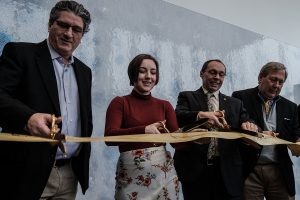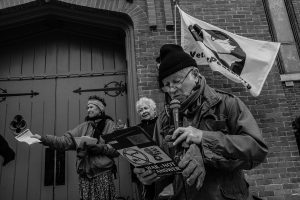UI students from Puerto Rico reflect on return to campus after earthquake hits home
A destructive sequence of earthquakes began in December 2019 in Puerto Rico, leaving three UI students with varying emotions leaving the island during this vulnerable time.
The Old Capital from the roof of UIHC in Iowa City, Iowa on March 25, 2019.
January 26, 2020
University of Iowa student Adriana Morales woke up Dec. 28 to her grandmother’s house shaking violently.
Morales was visiting her grandmother in Cupey, a municipality of San Juan, Puerto Rico, when the island was rocked by a 6.4 magnitude earthquake — the largest in the country since 1918.
“For the first one, it wasn’t that bad,” Morales said. “So, I woke up. Immediately when I woke up my AC turned off and it started shaking for 40 seconds.”
Morales said she was impressed that her grandmother’s electricity returned after a day and a half because she didn’t believe the electric company would show up. She said that her grandmother and many others didn’t have power for months following Hurricane Maria in 2017.
A sequence of earthquakes began in Puerto Rico Dec. 28, when a small-magnitude quake shook the southern portion of the island nearest coastal city Ponce, said William Barnhart, assistant professor of earth and environmental sciences at the UI.
“The larger the magnitude of the main shock, the larger magnitude of the aftershocks,” Barnhart said.
Related: UI professor uses satellites to improve earthquake response
Barnhart attributed the continuing aftershocks to the size of the initial main shock and said such aftershocks would slow down over the month after the main shock.
After the government was exposed for not properly distributing water bottles and other supplies, Morales said that many on the island lost all faith in the government’s ability to properly aid victims.
“I’m just worried about how the government is going to manage the funds that are going to be given to them by FEMA,” Morales said.
Although the ongoing aftershocks have been concentrated on the southern side of the island, people in the north, like Morales and UI junior Melissa Martínez-Raga, said they felt the main shock as well.
Martínez-Raga was jolted awake while visiting her boyfriend in Cupey when the earthquake hit, and they ran outside to see the house shaking during an aftershock later that morning.
“It’s something that kind of plays with your mind,” Martínez-Raga said. “I haven’t really been able to rest since all of this started. It’s kind of stressful because I’m living it, but I’m also leaving, and it’s kind of endless survivor guilt I guess.”
Related: Guest column: UI alum rides out Hurricane Maria
The U.S. Geographical Survey reported on Jan. 7 that a 6.4 magnitude main shock hit the U.S. territory — the largest magnitude earthquake of the ongoing sequence.
Near to San Juan, Puerto Rico in her hometown of Guaynabo, UI student Natalia Cruz-Aguayo was also visiting her boyfriend when they felt the house shaking. After hours of wandering around the streets, the family was out of power for nearly four days. Cruz-Aguayo was one of the many volunteers helping on the island.
She said what she saw was grim: a baseball stadium full of displaced people, gurney beds, and flimsy tarps for shelter.
Now that the UI is kicking off its spring semester, all three women have returned to Iowa City, even as aftershocks continue in Puerto Rico. Nevertheless, Morales said she remains hopeful for the future.
“I thought I was going to be worried,” Morales said. “But seeing everything on social media and seeing my people take matters into their own hands really has been super relieving. It makes me feel proud of being Puerto Rican. It makes me feel like we’re going to be OK.”







